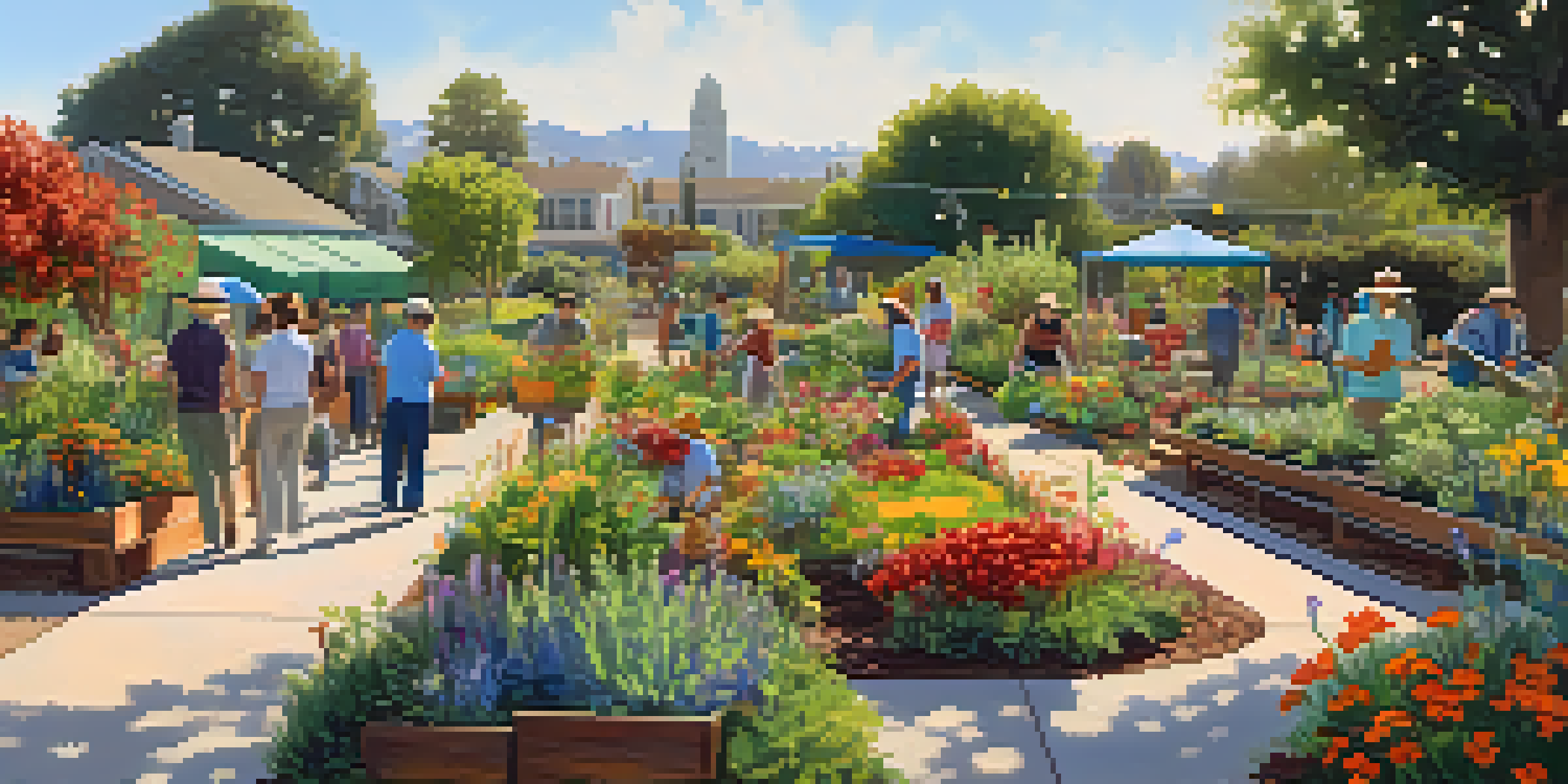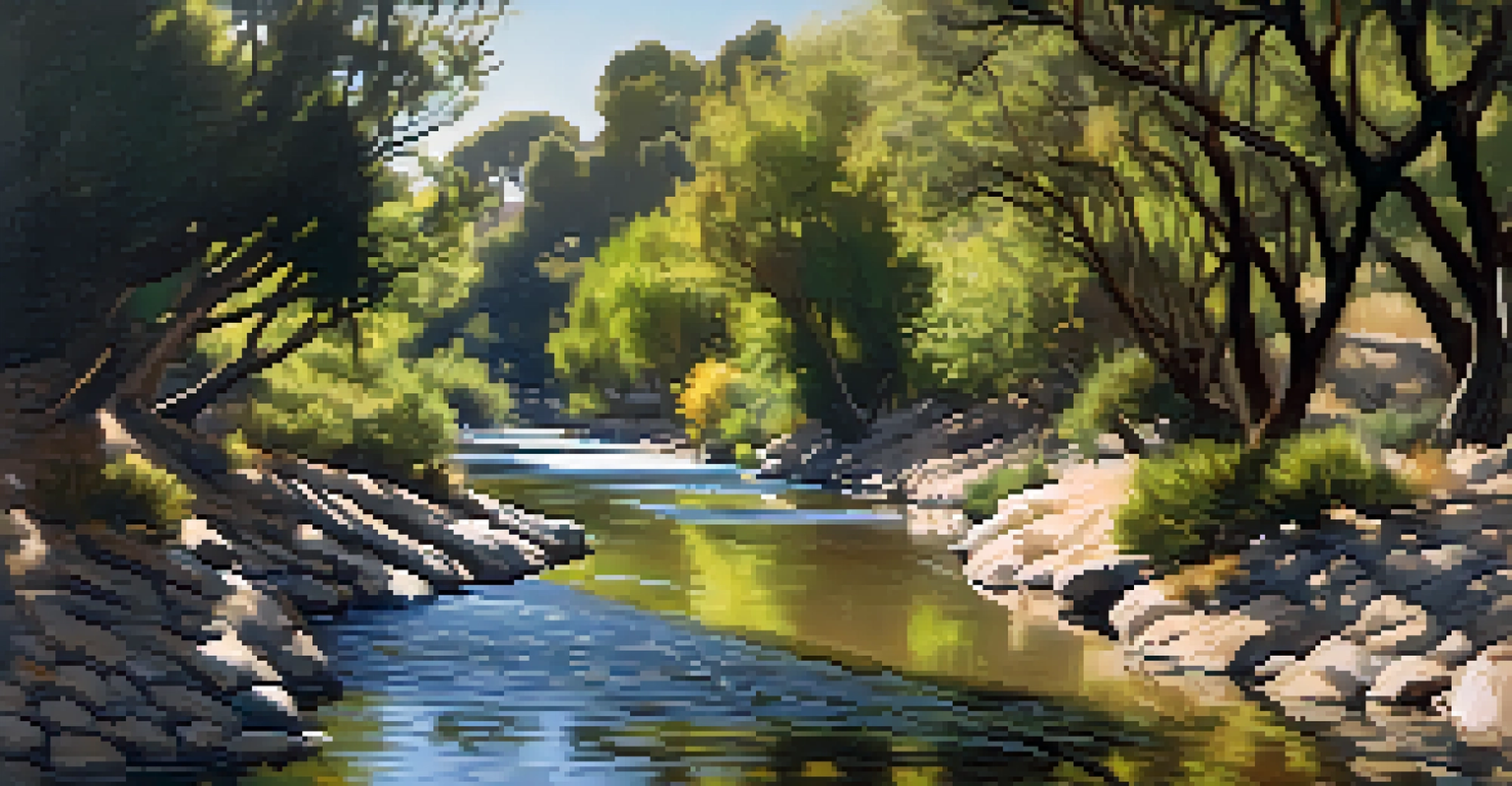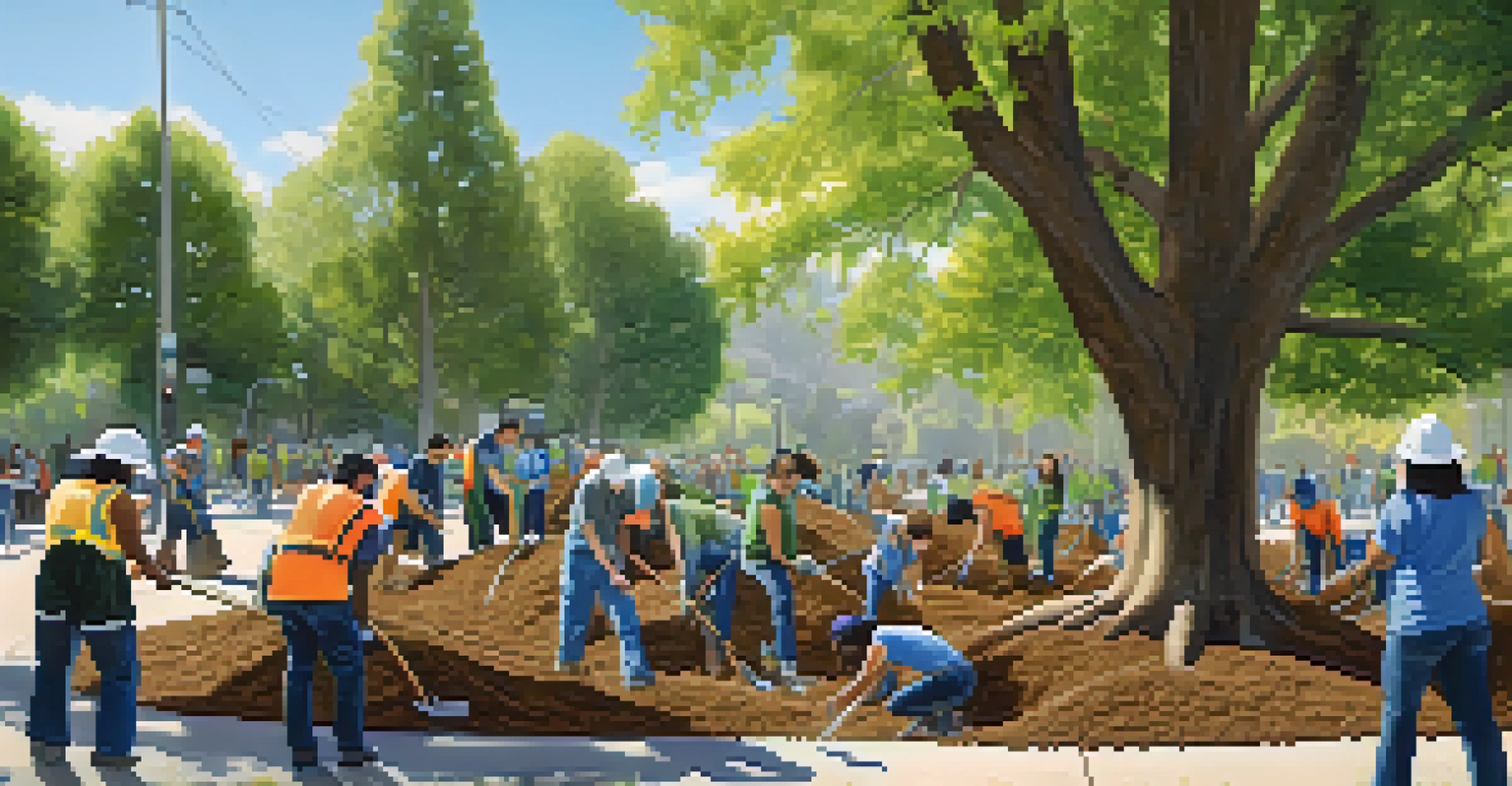Biodiversity Conservation Efforts in Pasadena's Urban Areas

Understanding Urban Biodiversity in Pasadena
Urban biodiversity refers to the variety of life forms in city environments. In Pasadena, this includes everything from native plants to urban wildlife. Maintaining this diversity is crucial as it supports ecosystem health and enhances the quality of life for residents.
The greatest threat to our planet is the belief that someone else will save it.
Pasadena's urban landscape presents unique challenges and opportunities for biodiversity. With its mix of residential areas, parks, and commercial zones, the city can serve as a vital habitat for various species. However, urbanization often threatens these habitats, making conservation efforts essential.
Engaging the community in biodiversity initiatives helps raise awareness. When residents understand the importance of local flora and fauna, they are more likely to support conservation efforts. This communal approach strengthens the bond between people and their environment.
Key Conservation Projects in Pasadena
Pasadena has embarked on several projects aimed at enhancing urban biodiversity. The Arroyo Seco Master Plan showcases how green spaces can be transformed into thriving ecosystems. These projects not only benefit wildlife but also improve recreational spaces for residents.

Another notable initiative is the Pasadena Urban Forest Master Plan, which emphasizes tree planting and care. Trees provide shade, reduce heat, and create habitats for birds and insects. By increasing tree coverage, Pasadena aims to create a healthier urban environment.
Community Engagement Boosts Biodiversity
Involving residents in conservation efforts fosters a sense of ownership and strengthens the connection between people and their local ecosystems.
Community gardens have also emerged as a popular conservation effort. They promote biodiversity by introducing native plants and provide fresh produce to neighborhoods. These gardens foster community engagement and awareness about the importance of local ecosystems.
The Role of Native Plants in Urban Areas
Native plants are crucial for supporting local wildlife. They are adapted to the local climate and soil, making them more resilient than non-native species. In Pasadena, planting native flora helps create habitats for pollinators like bees and butterflies.
In every walk with nature one receives far more than he seeks.
Moreover, native plants require less water and maintenance, which is beneficial in conserving resources. This is especially important in regions prone to drought. By incorporating native species into landscaping, Pasadena can promote sustainability as well.
Education plays a key role in increasing the use of native plants. Programs that teach residents about the benefits of native gardening can lead to more environmentally friendly choices. This shift not only enhances biodiversity but also beautifies neighborhoods.
Community Involvement in Conservation Efforts
Community involvement is vital for the success of biodiversity initiatives. Local organizations often host events, such as tree planting days and clean-up efforts, where residents can participate hands-on. These activities foster a sense of ownership over local natural spaces.
Volunteers also contribute to monitoring local wildlife and habitats. By participating in citizen science projects, residents can help track species populations and health. This data is invaluable for informing conservation strategies and ensuring they are effective.
Native Plants Support Local Wildlife
Utilizing native plants in landscaping is essential for creating resilient habitats that benefit local pollinators and conserve resources.
Engaging schools in biodiversity education can cultivate a new generation of environmental stewards. Programs that incorporate outdoor learning not only enrich students' knowledge but also inspire them to take action in their communities.
Challenges Facing Pasadena's Urban Biodiversity
Despite its efforts, Pasadena faces several challenges in preserving urban biodiversity. Urban sprawl can lead to habitat fragmentation, making it difficult for species to thrive. This can result in decreased populations and even local extinctions.
Pollution is another significant threat to urban biodiversity. Contaminants can harm wildlife and degrade habitats. Addressing these environmental issues requires collaborative efforts between city planners, residents, and environmental organizations.
Invasive species also pose a threat to local ecosystems. They can outcompete native plants and disrupt food chains. Effective management strategies are essential to mitigate the impact of these invaders and protect Pasadena's native biodiversity.
Partnerships for Biodiversity Conservation
Collaboration between various stakeholders is crucial for effective biodiversity conservation. Pasadena partners with organizations like the Audubon Society and the Sierra Club to enhance local initiatives. These partnerships leverage resources and expertise to achieve common goals.
Local government plays a key role in supporting conservation efforts. By providing funding and resources, it can help sustain ongoing projects and community initiatives. Policies that prioritize green spaces ensure the long-term health of urban ecosystems.
Collaborative Conservation Efforts
Partnerships between the city, organizations, and businesses are crucial for effectively preserving and enhancing Pasadena's urban biodiversity.
Engaging businesses in conservation can also lead to innovative solutions. Corporate sponsorships for local projects can provide much-needed funding while promoting corporate social responsibility. This approach encourages a holistic view of urban biodiversity as a community asset.
Future Directions for Biodiversity in Pasadena
Looking ahead, Pasadena aims to expand its biodiversity initiatives even further. Plans for new parks and green corridors are in the works, which will enhance connectivity for wildlife and improve urban aesthetics. These developments are crucial for creating a more resilient urban ecosystem.
Technology will also play a significant role in future conservation efforts. Tools like GIS mapping and drone technology can help monitor habitats and wildlife more efficiently. By leveraging technology, Pasadena can make informed decisions about its biodiversity strategies.

Lastly, fostering a culture of sustainability within the community will be vital. Continued education and outreach will empower residents to take an active role in conservation. A city that values its biodiversity is one that thrives both ecologically and socially.